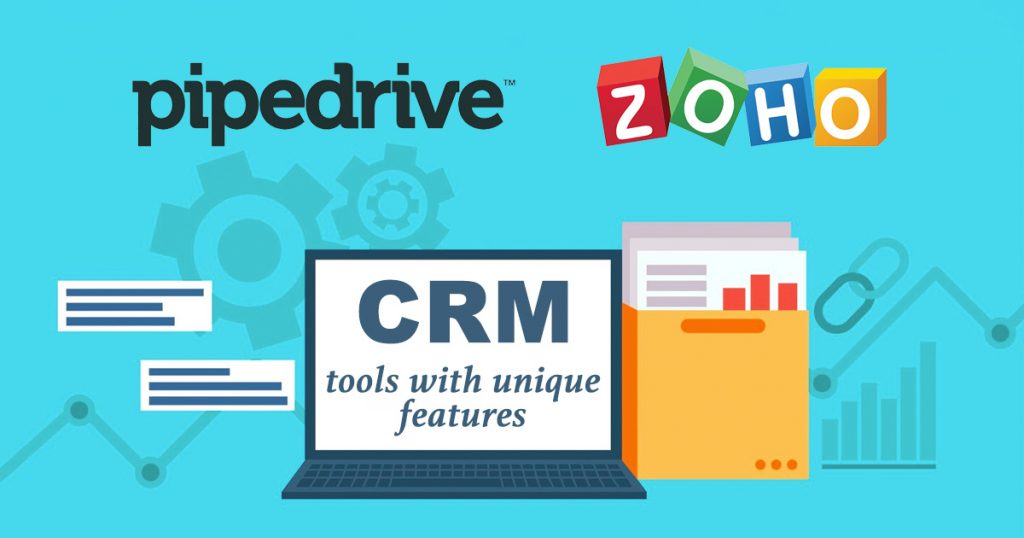When talking about customer relationship management (CRM) software, businesses often need to choose between different platforms. Pipedrive and Zoho CRM are also popular solutions. Each has distinct features tailored to fulfill specific business requirements. To help you make the right CRM choice, you need to know the comparison of Pipedrive and Zoho.
Overview of Pipedrive and Zoho CRM
Pipedrive is built mainly for sales teams, helping them manage sales pipelines and track deals easily. Its straightforward and user-friendly design makes it an excellent alternative for small and medium-sized enterprises seeking an easy solution to handle sales.
Zoho CRM, on the other hand, is part of a larger set of tools that support not just sales but also marketing, customer support, and analytics. This makes Zoho a desirable choice for companies seeking a comprehensive solution to manage many jobs.
Zoho CRM vs Pipedrive: The Differences
When comparing Pipedrive and Zoho, here’s how their features stack up:
Sales Pipeline Management
Pipedrive offers a visual sales pipeline with drag-and-drop functionality, while Zoho CRM provides integrated modules with flexible project management.
Email Integration
Pipedrive allows seamless email integration and tracking, whereas Zoho CRM includes email integration with basic tracking.
Customization
Pipedrive lets users customize sales stages, while Zoho CRM provides extensive customization options across various tools.
Pricing Structure
Both Pipedrive and Zoho CRM offer pricing plans that work well for businesses of all sizes:
Pipedrive Pricing:
- Plans cost between $14 and $99 per user per month, based on the features included.
- There is no free version, but a trial period is provided.
Zoho CRM Pricing:
- Plans start at $14 per user per month and go up to $52 per user per month.
- A free version with restricted functionality is provided.
Zoho’s bundled plans offer more value for businesses that need extra features. Pipedrive’s pricing is simple but doesn’t provide the flexibility of Zoho’s options.
User Experience and Interface
The user interface plays an important role in choosing a CRM:
Pipedrive:
- It has a simple and easy-to-use design, ideal for managing sales processes.
- The visual sales pipeline gives a clear view of progress and helps users prioritize tasks.
Zoho CRM:
- It has an appealing design but can feel more complex due to its many features.
- New users might find it harder to learn compared to Pipedrive.
Pipedrive is easier to use because of its focus on sales, while Zoho’s wide range of tools might be overwhelming for some.
Customer Support
Good support is essential for any CRM platform:
Pipedrive Customer Support:
It offers email, live chat, and a knowledge base with instructions and training.
Zoho Customer Support:
- Offers forums, documentation, and direct support options.
- Some users experience slower response times than Pipedrive.
Pipedrive is better for faster and more effective customer support.
Marketing Automation
Both platforms include marketing automation tools but serve different needs:
Pipedrive:
- Focuses on basic features like email campaigns and lead tracking to support sales.
- Its marketing tools are less advanced than Zoho’s.
Zoho CRM:
- Offers powerful marketing tools like campaign builders, bulk emailing, and detailed analytics.
- Great for businesses that want to combine marketing and CRM.
Zoho CRM is the better choice for businesses looking for strong marketing tools.
Integrations and Scalability
Connecting with other tools and growing with the business are important features:
Pipedrive:
- Allows many third-party integrations through its open API.
- Works well with tools like project management and social media platforms.
Zoho CRM:
- Focuses on its own ecosystem, like Zoho Projects and Zoho Campaigns.
- Uses tools like Zapier for integrations outside its ecosystem.
Pipedrive is more flexible for businesses that need many third-party integrations.
When to Choose Pipedrive and Zoho?
When selecting between Pipedrive and Zoho CRM, it is critical to look at your company’s specific requirements. Each platform has unique strengths that cover various parts of sales and client relationship management.
Pipedrive
- If you mainly need a CRM for managing sales and tracking deals, Pipedrive is a good fit.
- Pipedrive is straightforward and great for businesses that want a simple CRM.
- It is ideal for small and medium-sized organizations that require a cheap CRM for sales management.
- It provides prompt customer service via email and live chat.
Zoho CRM
- If you need tools for sales, marketing, customer support, and analytics, Zoho CRM is a better choice.
- Zoho is great if you need strong marketing features like email campaigns and detailed reports.
- It is ideal for small and medium-sized organizations that require a cheap CRM for sales management.
- It provides prompt customer service via email and live chat.
- If you use other Zoho tools, Zoho CRM integrates smoothly with them.
Which CRM is Best for Your Business: Pipedrive or Zoho?
Both Pipedrive and Zoho CRM have unique benefits based on what your business needs. By comparing user experience, customer service, cost, and features, you can make an informed decision that meets your company’s objectives.
